Anna Larsson's fellow Swedes can count themselves lucky that the worldwide first choice to sing Wagner's Erda and the midnight song in Mahler's Third Symphony has made so much of her Dalarna inheritance. In what's called a "Concert Barn" (Konsertlada) built on land bought next to the birthplace of her father, who lived in Vattnäs, a small settlement on Lake Orsa, and later moved to Stockholm, she has already established a working theatre serving a strong operatic tradition with her country's best fellow singers, and a nurturing of young musicians who include many outstanding players in this year's 32-piece orchestra.
The Vattnäs project kicked off six years ago with Britten’s The Rape of Lucretia, Larsson singing the role of the ill-fated Roman matron. Since then the emphasis has been, impressively, on new works: a popular treatment of the Jussi Björling story and, last year, Norrmalmstorgsdramat by Albert Schnelzer, based on the original real-life Stockholm Syndrome story. The decision to stage the "preliminary evening" of Wagner's Der Ring des Nibelungen came about because another score wasn’t ready; it will appear next year, so should they be thinking of moving on to Die Walküre, that must wait.
“Siljansringen”, the “Siljan Ring,” though it heads the programme cover above “Rhenguldet”, isn’t quite what you might think. It actually refers to the impact crater, the largest in Europe, formed by a meteorite landing in the Devonian period; vast Lake Siljan is on the south/southwestern edge of the crater. Vattnäs is nearby, on the connected lake, not far from the neat town of Mora, with its state-of-the-art gallery dedicated to local boy turned wealthy Swedish master artist Anders Zorn (his eccentric wooden house, incorporating his childhood home, is across the lawns and rosebeds).  The setting for the barn/theatre/concert hall, Vattnäs Konsertlada, is idyllic (pictured above); the local single-line railway track runs just above the group of buildings – evoking the train to the Ekdahl family’s summer residence in Bergman's semi-autobiographical Fanny and Alexander though without even so much as a station building - and on the Sunday afternoon Stockholm diplomats got off the train just in time for the concert (I’d made the mistake of walking along the track, rich in flowers and butterflies, not realising I would have to step aside for the one passing carriage of the day). The land slopes down to the lake, the water and the opposite shore clear from the grounds. Burgers and rhubarb crumble are a fixture in a tent and another hut.
The setting for the barn/theatre/concert hall, Vattnäs Konsertlada, is idyllic (pictured above); the local single-line railway track runs just above the group of buildings – evoking the train to the Ekdahl family’s summer residence in Bergman's semi-autobiographical Fanny and Alexander though without even so much as a station building - and on the Sunday afternoon Stockholm diplomats got off the train just in time for the concert (I’d made the mistake of walking along the track, rich in flowers and butterflies, not realising I would have to step aside for the one passing carriage of the day). The land slopes down to the lake, the water and the opposite shore clear from the grounds. Burgers and rhubarb crumble are a fixture in a tent and another hut.
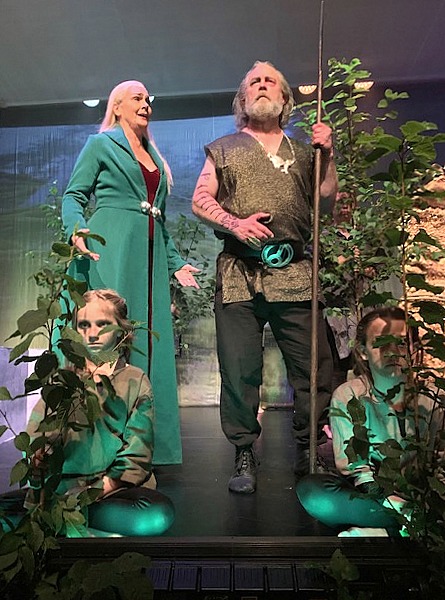 Some years ago, before the barn was built, I had my chance to hear a middle-Swedish Rheingold aka Rhenguldet not far from here, staged in the quarry performing space known appropriately (and for rock concerts too) as Dalhalla. We never got there because our hostess misread the bus timetables. So it seemed like serendipity when the offer came to hear Larsson sing not only chief goddess Fricka, as she had in Dalhalla, but also Erda. That entailed one of the quickest costume and wig changes opera has ever seen from a diva worthy of the name; she not only sounded but also looked good as white-haired earth mother, flanked by dryad children (pictured right by Monica Sundström).
Some years ago, before the barn was built, I had my chance to hear a middle-Swedish Rheingold aka Rhenguldet not far from here, staged in the quarry performing space known appropriately (and for rock concerts too) as Dalhalla. We never got there because our hostess misread the bus timetables. So it seemed like serendipity when the offer came to hear Larsson sing not only chief goddess Fricka, as she had in Dalhalla, but also Erda. That entailed one of the quickest costume and wig changes opera has ever seen from a diva worthy of the name; she not only sounded but also looked good as white-haired earth mother, flanked by dryad children (pictured right by Monica Sundström).
You couldn't always say the same for the rest of the production, necessarily low-budget and tending more to Lord of the Rings fantasy than a powerful expression of what this initial saga about the love of power quashing the power of love might mean to us today. There were effective ideas making the most of the very limited stage but no revelations from director Patrik Sörling The designer, Austrian-born adoptive Swede Bernd Janusch, is a silversmith of incredible craft and artistry, and his Nibelheim really hit the mark with its coal-like middle blackness and slave workers led by Anders J Dahlin’s vivid characterisation of downtrodden Mime. The video projections were good when they worked properly and - Neuschwanstein as Valhalla apart - depended wisely on photography of local wonders like the waterfall gully of Styggforsen, with its bedrock upturned by the meteor 380 million years ago making for some unique geology and its “Troll Hole” cave as the perfect entrance to Nibelheim. 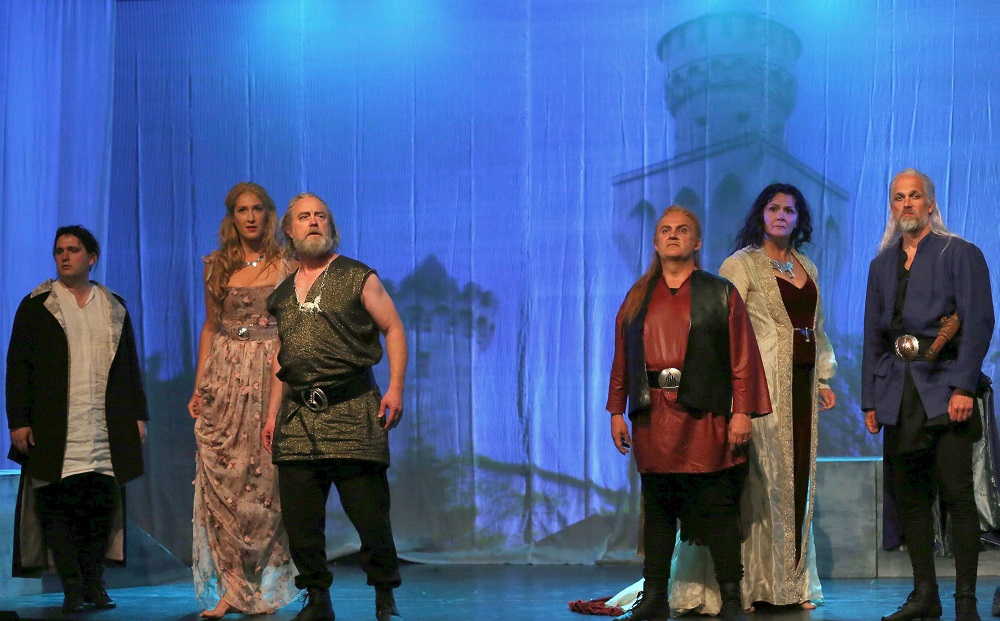 "If there's one thing everyone can agree on, it's that we know how to cast," Larsson said in the company of her tenor husband Göran Eliasson (the perfect Loge). And the casting was top quality throughout, starting with the three Rhinemaidens (Alexandra Büchel, Katarina Böhm and Elisabeth Leyser). There were significant role debuts: Johan Schinkler seems like an ideal Wotan in build and vocal gravitas, but his previous Wagner roles have been Fafner and Hagen in the Ring, the Dutchman and Gurnemanz; while Fredrik Zetterström, scary Alberich to the manner born, had sung this Wotan and Amfortas in Parsifal. (Pictured above by Kjell Janson from left to right Froh (SImon Petersson), Freia (Maja Frydén), Wotan (Schinkler), Loge (Eliasson), Fricka (Larsson) and Donner (Johan Rydh).
"If there's one thing everyone can agree on, it's that we know how to cast," Larsson said in the company of her tenor husband Göran Eliasson (the perfect Loge). And the casting was top quality throughout, starting with the three Rhinemaidens (Alexandra Büchel, Katarina Böhm and Elisabeth Leyser). There were significant role debuts: Johan Schinkler seems like an ideal Wotan in build and vocal gravitas, but his previous Wagner roles have been Fafner and Hagen in the Ring, the Dutchman and Gurnemanz; while Fredrik Zetterström, scary Alberich to the manner born, had sung this Wotan and Amfortas in Parsifal. (Pictured above by Kjell Janson from left to right Froh (SImon Petersson), Freia (Maja Frydén), Wotan (Schinkler), Loge (Eliasson), Fricka (Larsson) and Donner (Johan Rydh).
Among the younger singers, who included a promising young bass as Fasolt, Jens Persson, and a lyric tenor able to shine in Froh’s one golden moment, Simon Petersson, the biggest vocal discovery, for non-Swedes who didn't know her theatre work already, at least, was Larsson's pupil Maja Frydén. Tall and striking, she could almost be another Lise Davidsen in the making, though more likely to specialise in Strauss than Wagner (she would make a wonderful Arabella). Freia sings just about enough to make her mark, but it was the concert which confirmed a major talent: Frydén opened it, appropriately, with Elisabeth’s greeting from Tannhäuser and later melted the entire audience with Rusalka’s Song to the Moon (it should have been Marietta’s Song from Korngold’s Die tote Stadt, but the music hadn’t arrived in time). Her dramatisation in Sibelius's great ballad-song "Flickan kom ifrån sin älsklings möte" ("The girl returned from meeting her lover") did not pale alongside the classic Flagstad version.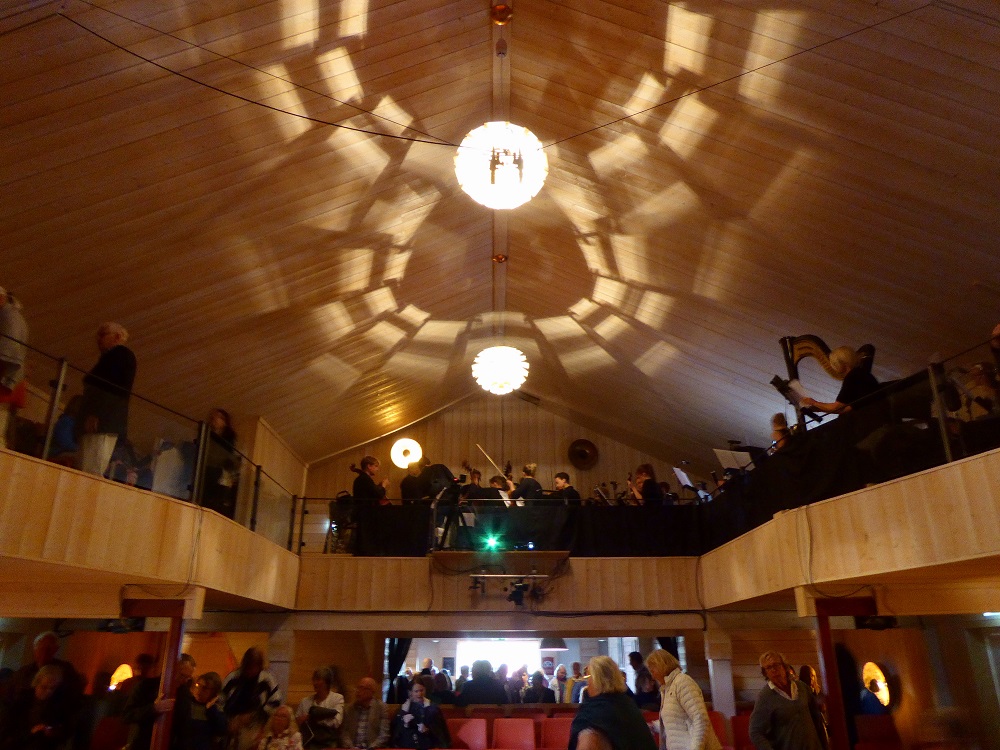
The concert didn’t go to quite such extremes, but certainly had some serious surprises on the chamber-musical front, generously prepared by young musicians wanting to play music together all day while they were here. A first-rate student quartet (one hardly needs to qualify with the second epithet) played a magical work by a contemporary composer, the second movement from Andrea Tarrodis's "Madardal" String Quartet (No. 2), framed by unearthly birdsong, and complemented it with a more generic piece by an earlier Swedish female composer, the first movement from Elfrida Andrée's Sommarminnen från Bjurslätt (Summer Memories from Bjurslätt)- though music by a distinguished national heroine of the past isn't to be sniffed at. The next ensemble featured not only a superb bassoonist, Fredrik Jergle Almquist, but also a standout first violinist, Marcus Bäckerud, even if the music was merely culinary. The orchestral contributions were seriously good: Elgar's Serenade for Strings, with exactly the right suppleness in the lines, and Wagner's Siegfried Idyll, conducted - though I couldn't see her - by the orchestra's leader Gudrun Dahlkvist.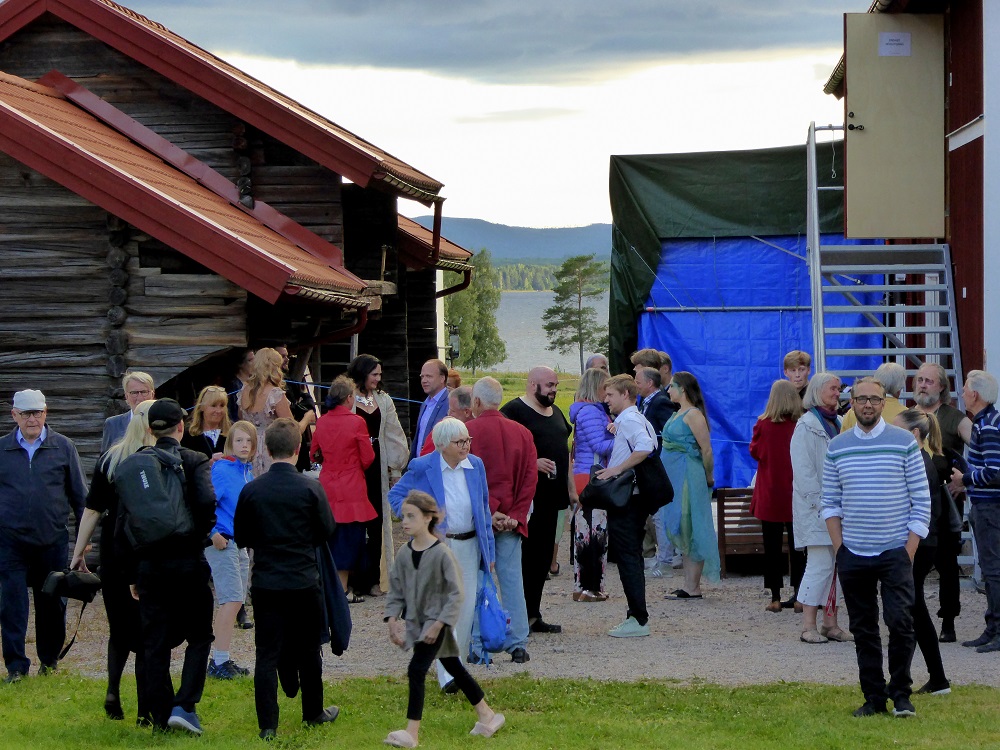

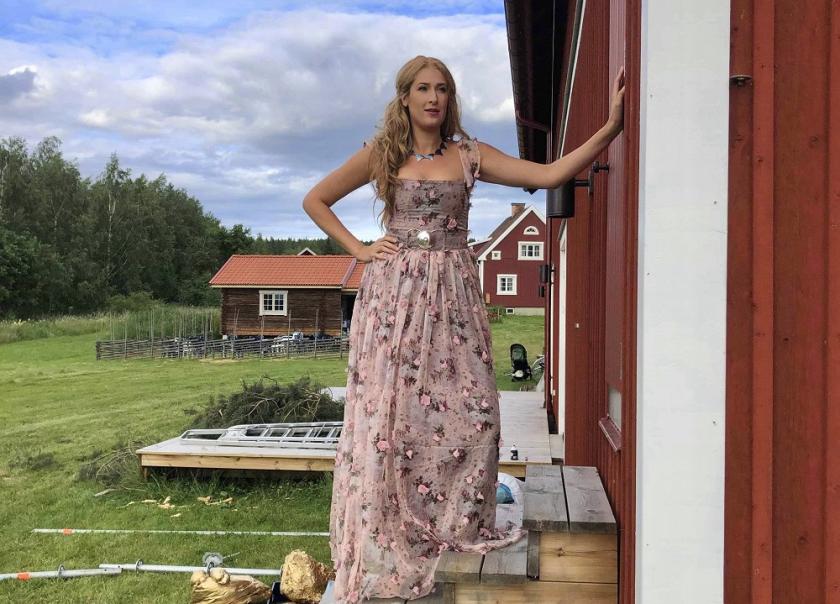













Add comment